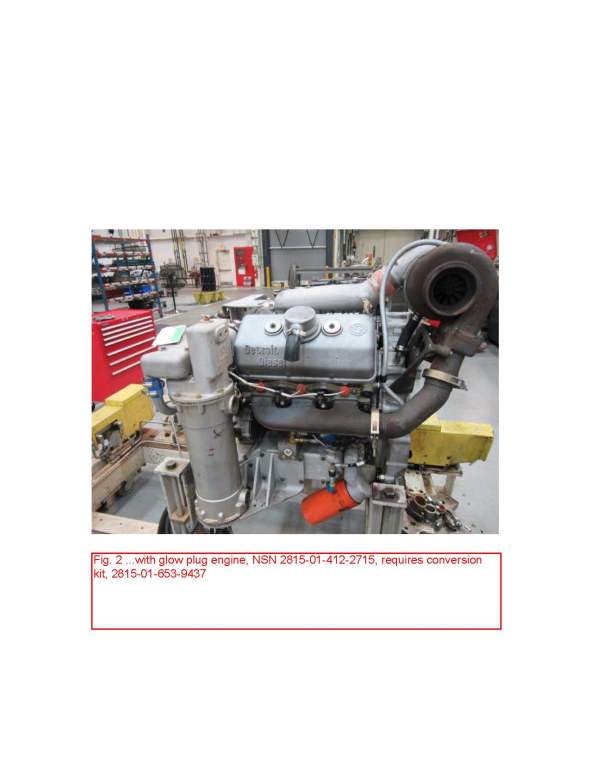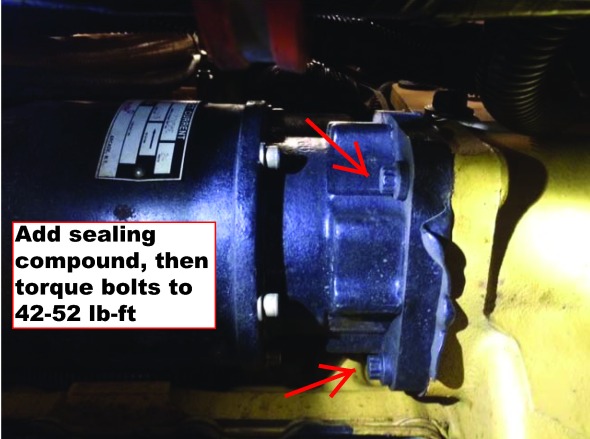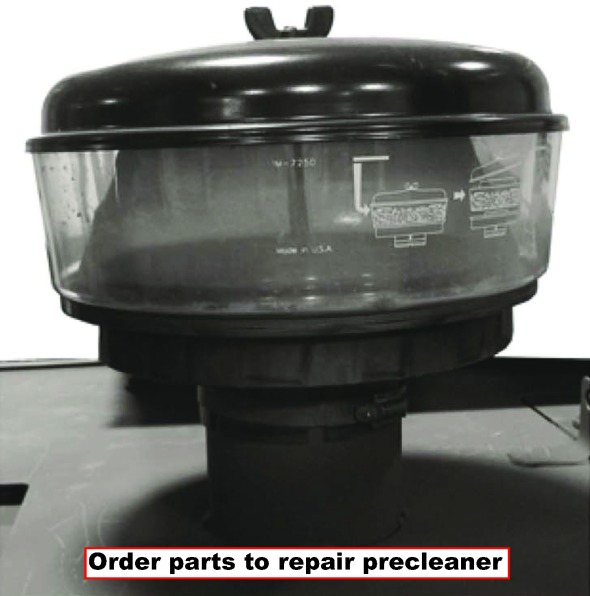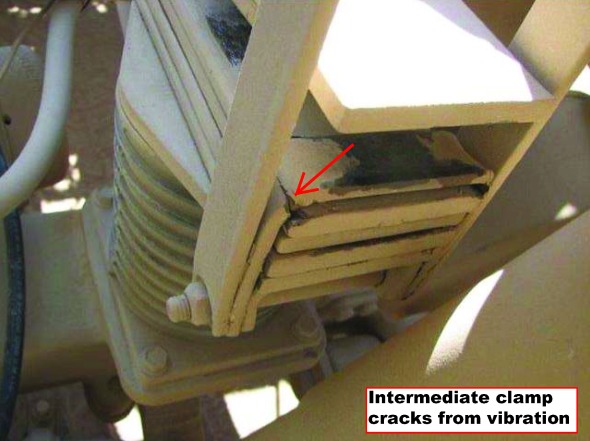New Engine Conversion Kit
Posted: 2016/25/10 Filed under: ARMY, General PM, PS, PS Mag, PS Magazine, Soldier, Soldiers, Uncategorized | Tags: M113 engine M113, PM, PMCS, Preventive Maintenance, PS, PS Magazine, Soldier, Soldiers, US ARMY, us army reserve, us national guard Leave a comment
The M113-series FOV’s heater box-equipped engine, NSN 2815-01-248-7644, is being phased out through attrition. It’s replacement is the glow plug-equipped engine, NSN 2815-01-412-2715.

If you have an M113 that’s due for an engine replacement, order the new version. Keep in mind that you’ll need the glow-plug conversion kit, NSN 2815-01-653-9437. The kit upgrades the electrical system so it can accept the new engine.

You’ll find the instructions for installing the conversion kit in TM 9-2350-277-13&P in IETM EM 0321 (Oct 14).
Questions? Contact Christopher Faiola at DSN 786-8291, (586) 282-8291, or email:
christopher.j.faiola.civ@mail.mil
or Floyd Perry at DSN 786-8290, (586) 282-8290, or email:
floyd.n.perry.civ@mail.mil
or Richard Darling DSN 786-2517, (586) 282-2517, or email:
richard.j.darling.civ@mail.mil
***************************************
GCSS-Army Turn-in Credit
GCSS-Army has its own set of document numbers. Once the customer is issued a glow plug-equipped engine, NSN 2815-01-412-2715, a ZRL (return delivery to SSA) purchase request document is created. The ZRL document number is eligible for credit for 180 days.
The customer then turns in the heater box-equipped engine, NSN 2815-01-248-7644, with a ZXS (excess requisition) document since the return has no corresponding issue. The ZXS document will be assigned a return advice code (RAC) of 1W.
The SSA will need to manually match the -7644 return receipt against the -2717 issue document and manually remove the RAC to allow the system to generate credit. The SSA will also need to manually close the ZRL document so that it doesn’t match to another turn-in receipt.
Note: The issue and return MILSTRIP document numbers will be different.
Tighten Up Loose Starter Bolts
Posted: 2016/20/10 Filed under: Uncategorized | Tags: FMTV, HIMARS, PM, PMCS, Preventive Maintenance, PS, PS Magazine, starter, starter bolts, US ARMY, us army reserves, us national guard Leave a commentMechanics, the bolts that mount your FMTV or HIMARS starter to the engine have a bad habit of coming loose. In some cases the starter loosens enough that the end housing on the starter cracks or breaks.

Keep the bolts tight with this two-step process:
- Whenever the starter is removed, make sure the starter bolt’s threads are cleaned real good-like.
- Put a dab of sealing compound on the bolt’s threads and torque ‘em to 42-52 lb-ft. Get a 50ml bottle of sealing compound with NSN 8030-01-014-5869. Or use NSN 8030-01-104-5392 to get a box of ten 10cc bottles

Wet Filter Turns Moldy
Posted: 2016/20/10 Filed under: Uncategorized | Tags: 621G, Army, Army National Guard, Army Reserves, Army Soldiers, PM, PMCS, Preventive Maintenance, PS, PS Magazine, Soldier, Soldiers Leave a commentOperators, make sure you keep a close eye on the 621G scraper’s cab air filter, especially after a heavy rain.
The filter’s access door has a series of louvers that allows open air flow. Problem is, the louvers also allow water from rain and cab run-off inside the door. That water fills the channel along the inside bottom of the door.
If there’s too much water, it overflows the channel and the air filter soaks it up like a sponge. A soaked filter element gets moldy real quick!

You may also see buildup from water that seeps past the drain hoses attached to the A/C drip pan.
The hoses are installed with a grommet that fits into a hole in the plastic drip pan. But the grommet doesn’t fit tight and the silicone sealant holding it in place gives way from vehicle vibration.
Here’s the bottom line. There’s a fix in the works to get rid of the water. But in the meantime, make sure the air filter element stays clean and dry. Replace a wet or moldy filter with NSN 4330-01-602-0614. If it’s just dirty, clean the filter with low-pressure air (30 psi or less).
Are You Flying with the Right Radio?
Posted: 2016/13/10 Filed under: ARMY, General PM, Maintenance Updates, PS, PS Magazine, Safety, Soldier, Soldiers, Uncategorized | Tags: Army, Army National Guard, army reserve, Kiowa, PM, PMCS, Preventive Maintenance, PS, PS Magazine, rt-5000 radio, Soldier, Soldiers Leave a commentPilots, having the right radio in your Lakota rotorcraft is the difference between communicating and not communicating.
The bad news is that some RT-5000 radios meant for Kiowa OH-58A/C models have been installed on the Lakota UH-72A models. The wrong radio sets were moved into unit avionic stocks and used in Lakotas as line replaceable units (LRUs).
Both airframes use RT-5000, remote-mount, multi-band AM/FM transceiver radios. The version used for OH-58A/C Kiowas does not allow for digital transmission and reception of the same frequency signals like the RT-5000 approved for the Lakota.
If your UH-72A’s radio isn’t operating properly, eyeball the part number (PN) and cross check that PN against the proper supplemental type certificate (STC) for the correct Mission Equipment Package (MEP) of the rotorcraft.
Lakotas operating in a security and support (S&S) MEP, need the RT-5000s with PN 400-105525-6011 for comm #4, and PN 400-105525-6111 for comm #5. For Lakotas in a non-S&S MEP configuration, the RT-5000 radio should be PN 400-015525-5111 operating in comm #4.
If you find an unauthorized radio in your Lakota, make the following entry in the aircraft logbook:
“RT-5000 (PN 400-015525-xxxx*) required removal and replacement per aircraft’s STC with correct RT-5000 (PN 400-015525-xxxx*)”
*Ensure the PN(s) reflect the RT-5000 to be removed and the correct PN(s) for the MEP version that is going to be installed.
Got questions about the RT-5000 radio? Contact Keith Stilwell, DSN 645-0797, (256) 955-0797 or email:
keith.e.stilwell.civ@mail.mil
Pick the Right Type and Number of Jacks
Posted: 2016/13/10 Filed under: ARMY, General PM, Maintenance Updates, PS, PS Mag, Safety, Soldier, Soldiers, Uncategorized, US ARMY | Tags: aircraft jacks, Apache, Army, Army National Guard, Army Reserves, Chinook, Hawk, Kiowa, Lakota, PM, PMCS, Preventive Maintenance, PS, PS Magazine, Soldier, Soldiers Leave a commentMechanics, aircraft jacks are vital for maintenance on your helicopter. They’ve been around for years and gone through a lot of changes. Some have been put out to pasture while others have been neglected.
Now, that won’t be a problem anymore because we told you on Pages 27-30 of PS 760 (Mar 16), how to maintain your jacked up jacks.
With all the changes, sometimes it’s difficult to determine which jack is used for which aircraft task. No longer. Here’s a list of the maintenance tasks that require jacks and how many to use:
Apache
NOTE: These are typical tasks which require the aircraft to be placed on jacks. Please ensure you follow TM 1-1520-Longbow/Apache (IETM) for specific requirements, size, placement, warnings, cautions, and notes for all jacks.
- Jacking aircraft, 3 point, using a tripod jack requires two 5-ton jacks, NSN 1730-00-516-2018, and one 3-ton jack, NSN 1730-00-734-9382. The Fuselage adapter, NSN 1560-01-226-7551, will also be used.
- Jacking aircraft, 2 point, using a tripod jack requires two 5-ton jacks, NSN 1730-00-516-2018. The Fuselage adapter, NSN 1560-01-226-7551, will also be used.
- Jacking tail landing gear using a tripod jack requires one 3-ton jack, NSN 1740-00-734-9382.
- Jacking the main landing gear, 1 point, using an axle jack requires one 5-ton jack, NSN 1740-00-540-2343. Chinook
- Note that Apache is the only helicopter airframe that uses the 5-ton jack, NSN 1730-00-516-2018.
- Jacking an entire Chinook requires two 12-ton jacks, NSN 1730-00-912-3998, and two 10-ton jacks, NSN 1730-00-203-4697. As an alternative method, you can use two 12-ton jacks, NSN 1730-00-912-3998, and one 10-ton jack, NSN 1730-01-563-7046.
- Replacing the forward right- or left-hand gear assembly requires one 10-ton jack, NSN 1730-01-563-7046. However, the aircraft weight must be below 24, 500 pounds.
- Replacing the forward right- or left-hand tire assembly requires one 10-ton jack, NSN 1730-203-4697.
- Replacing the aft right- or left- hand gear assemblies requires one 12-ton jack, NSN 1730-00-912-3998.
- Replacing the aft right- or left- hand tire assembly requires one 12-ton jack, NSN 1730-00-912-3998.
- Weighing aircraft using load cells (3 point) with a max gross weight of 24,500 pounds requires two 12-ton jacks, NSN 1730-00-912-3998, and one 10-ton jack, NSN 1730-01-563-7046.
- Weighing aircraft using load cells (4 point) with a max gross weight of 33,000 pounds requires two 12-ton jacks, NSN 1730-00-912-3998, and two 10-ton jacks, NSN 1730-00-203-4697.
- A/C Model Kiowa Warrior
- Jacking an entire OH-58A/C requires three 12-ton jacks, NSN 1730-00-912-3998.
- D-Model Kiowa Warrior
- Jacking an entire OH-58D requires three 12-ton jacks, NSN 1730-00-912-3998. Black Hawk Aircraft
- NOTE: When a Kiowa is on jacks, use an overhead hoist or cable support to maintain the aircraft. This is done as a safety precaution in the event a strong wind gust blows through the hangar and knocks the Kiowa off the jacks.
- Jacking requires three 12-ton jacks, NSN 1730-00-201-4849.
- Removal and installation of the right- and left-hand landing gear shock strut requires one 12-ton jack, NSN 1730-00-201-4849.
- Jacking the right- and left-hand main landing gear wheel and tire assembly requires one 10-ton jack, NSN 1730-00-203-4697.
- Removal and installation of the tail landing gear shock strut requires one 12-ton jack, NSN 1730-00-201-4849.
- Removal and installation of the tail landing gear wheel and tire assembly requires one 10-ton jack, NSN 1730-00-203-4697.
- Weighing the helicopter using load cells (3 point) requires three 12-ton jacks, NSN 1730-00-201-4849.
- Changing a flat tire or collapsed strut requires one 12-ton jack, NSN 1730-00-201-4849, or one 10-ton jack, NSN 1730-00-912-4697.
- Changing a flat tail tire or collapsed gear strut requires one 12-ton jack, NSN 1730-00-201-4849, and one 10-ton jack, NSN 1730-00-912-4697.
- Lakota Aircraft
- Jacking an entire UH-72A aircraft takes four jacks. The type of jack is not specified, but two 12-ton tripod jacks, NSN 1730-00-912-3998, and two 10-ton landing gear jacks, NSN 1730-00-203-4697, work well.
- Weighing the Lakota requires three jacks. The type of jack is not specified, but one 12-ton tripod jack, NSN 1730-00-912-3998 and two 10-ton landing gear jacks, NSN 1730-00-203-4697 work well.
M151 Spotting Scope Upgrade
Posted: 2016/13/10 Filed under: ARMY, Maintenance Updates, PS, PS Mag, Uncategorized | Tags: Army, M151, maintenance, PM, PMCS, Preventive Maintenance, Soldier, Soldiers Leave a commentIf your unit uses the M151 spotting scope, NSN 6650-01-504-8456, NSN 6650-01-557-7444 or NSN 6650-01-549-5838, good news! The scope is being upgraded to improve its performance when used with a night vision device. The upgrade includes a grid-based reticle and night vision adapter.
The upgrade will be done by MWO 9-6650-238-50-1. The old spotting scopes will be swapped out at Camp Robinson, Eglin Air Force Base, Ft Benning, Ft Bliss, Ft Bragg, Ft Campbell, Ft Carson, Ft Drum, Ft Hood, Ft Lewis, Ft Polk and Ft Stewart. The swaps will be scheduled through FORSCOM in accordance with AR 750-10. TACOM is managing the MWO.
If your unit isn’t located at one of these posts, the swap will be handled by mail. Contact your local MWO coordinator for instructions. It will take roughly a month for the mail-in swap.
Whether your M151 is being swapped out locally or mailed in, it should be stripped down and contain no down parts. Any parts turned in other than the scope won’t be returned and it will be the unit’s responsibility to replace them.
Questions? Contact Buck Sewell at (586) 282-1333 or email:
ernest.g.sewell.civ@mail.mil
or Christopher Kline at (586) 282-1357 or email:
christopher.m.kline4.civ@mail.mil
Repair, Don’t Replace, Precleaner
Posted: 2016/12/10 Filed under: ARMY, Maintenance Updates, PS, PS Mag, Uncategorized | Tags: 924H, Army, army maintenance, PM, PMCS, Preventive Maintenance, Soldier, Soldiers Leave a commentItem 1 of Fig 22 in TM 5-3805-298-24P (Mar 13) lists the 924H wheel loader’s precleaner, NSN 2940-01-068-7108. Replacing it will cost you a bit more than $107.
But what if it’s the cover or body that’s broken? Seems a shame to pay that much when only part of the precleaner is damaged.
Good news! Now you can replace those precleaner parts:
| Item | NSN | Cost |
| Access cover | 5340-00-103-8902 | $17.56 |
| Precleaner body | 2940-00-876-2181 | $19.65 |

Repairing the precleaner will save you a lot of bucks over the cost of a new precleaner. Make a note until the parts are added to the TM.
Stamp Out Broken Clamps
Posted: 2016/12/10 Filed under: Uncategorized | Tags: Army, FMTV, PM, Preventive Maintenance, PS, PS Magazine, Soldier, Soldiers Leave a commentOperators, get down on your hands and knees and check out the rear leaf spring, NSN 5360-01-375-7092, on your M1088A0/A1/A1R/A1P and M1157A1P2 FMTVs and M142 HIMARS.
The spring has a series of retaining clamps on each end: a short clamp on the bottom, an intermediate clamp that bands the #1 through #4 leaves, and a long clamp that binds everything together. The intermediate clamp on some vehicles is breaking from wear-and-tear and vehicle vibration.

While a broken clamp doesn’t make your vehicle NMC, you should still get your mechanic to remove it like this:
- Remove the long bolt and nut at the bottom.
- Pull out and discard the intermediate clamp.
- Insert two grade 8 bolts, NSN 5306-01-253-4429, through each side of the remaining two clamps. Secure them with two self-locking nuts, NSN 5310-01-241-6659.

By the way, if you order a new replacement spring with NSN 5360-01-375-7092, it will already be upgraded to the configuration without the intermediate clamp.
Watch Out for Bulging Tubes
Posted: 2016/17/08 Filed under: ARMY, General PM, Maintenance Updates, PS, PS Mag, PS Magazine, Safety, Soldier, Soldiers, Uncategorized, US ARMY | Tags: Army, Army National Guard, Army Reserves, Half-Mast, maintenance, Military, Military Equipment, PM, PMCS, Preventive Maintenance, PS, PS Magazine, Reserves, Soldier, Soldiers, United States Army Leave a commentHowitzers…
Watch Out for Bulging Tubes
Crewmen, it’s bad enough when explosive ordnance disposal (EOD) has to remove a stuck round from your 155mm howitzer. It’s a lot worse if you’re left with a bulging cannon tube!
That’s what could happen to your howitzer if EOD uses the water blast method to remove a stuck round. The 155mm cannon tubes most at risk are the M7776 and M284 steel and M7776 and M284A2 chrome barrels.
If EOD uses the water blast method to extract a stuck round from your howitzer, inspect the cannon tube with a borescope. A bulge means the tube has to be condemned. If you suspect a bulge but can’t see one, use a pullover gage to measure the area where you suspect damage.
You’ll find the full scoop on inspecting for damage in TM 9-1000-202-14, Evaluation of Cannon Tubes. Appendix T covers the M7776 tube and Appendix U covers the M284 tube. EM 0065, which covers most small arms, has the TM, as does LOGSA’s ETM website:
https://www.logsa.army.mil/etms
Be sure to immediately notify your logistics assistance representative (LAR) or field service representative (FSR) if EOD removes a stuck round from your howitzer.
You are also required to report EOD round removal and any damage on DA Form 2408-4, Weapons Record Data Card, in the remarks column. You can access it at:
https://tulsa.tacom.army.mil/guncard/index.cfm
Keep M3 Tripod Until You Get M205
Posted: 2016/16/08 Filed under: ARMY, Hot Topics, PS, PS Mag, PS Magazine, Soldier, Soldiers, Uncategorized, US ARMY | Tags: Army, Army National Guard, Army Reserves, Army Soldiers, Half-Mast, maintenance, PM, Preventive Maintenance, PS, PS Magazine, Reserves, Soldier, Soldiers, United States Army Leave a commentOn Page 43 of PS 760 (Mar 16) we told you the good news that the M205 tripod is replacing the M3 tripod.
It’s good news because the M205 is 32 percent lighter than the M3 and also includes an integral traverse and elevating mechanism.
But some units are jumping the gun and turning in their M3s before they get the M205. Not a good idea! They could be without tripods for a long time until they do get the M205. So keep using your M3s until you get the M205.
But once you get the M205, it’s important you turn in your M3s within 30 days. The Army will continue to use M3s for 3-4 years, so they need your M3s for other units. If any M3s aren’t usable, turn them in for local disposal.
Do not try to order the M205. If will be fielded through total package fielding (TPF).
Questions? Contact Grant Baker at DSN 786-1238, (586) 282-1238, or email:
